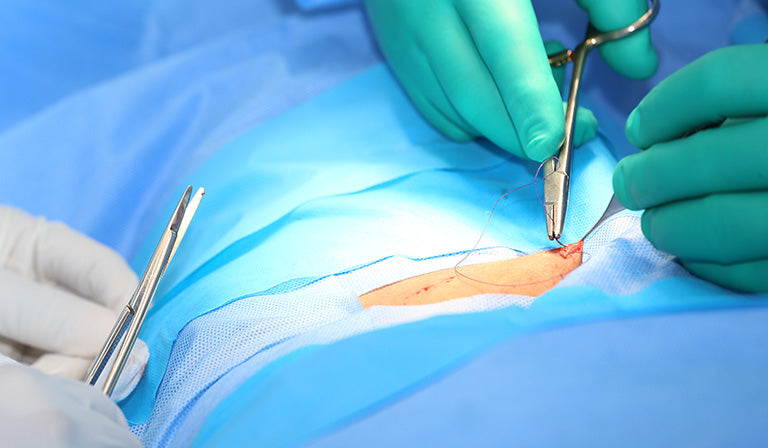

· By Trevor Horne
Why Are Barbed Sutures Chosen To Close Wounds?
If you're familiar enough with sutures to know what they are, but don't know the finer points of them, you may be interested to know there's a difference between conventional suture material and barbed sutures. That is not the only difference between sutures, of course, but it is what we’re going to concentrate on here.
We went straight to the horse’s mouth, so to speak, and asked two specific questions about barbed sutures. We talked to a couple of surgeons. Here's what they had to say.
Barbed Sutures
Question: What's your clinical experience been like with barbed sutures and what are they, specifically?
Spaced evenly along the length of the suture, tiny barbs are incorporated. Barbed sutures are available in nonabsorbable and absorbable forms. Rather than at the knotted end, across the length of the suture, wound tension is evenly distributed courtesy of this knotless type of suture.
It has three benefits:
- Minimal tissue strangulation
- Because no knots need to dissolve, less suture “spitting”
- Because, with one continuous running suture, multiple layers can be closed together, less time is needed to close an incision
Keep the Following in Mind
Question: When using barbed sutures, what are some of the things surgeons must keep in mind?
Careful handling is necessary with barbed sutures. The barbs of the suture could inadvertently be bent by OR personnel or by mishandling the suture. It's one of the biggest mistakes made when these types of sutures are used. The suture must be discarded if the barbs are damaged.
What's more, past the transition zone or midway point, be careful not to over-advance the suture. The barbs will be ineffective because this will bend them.
What Does a Barbed Suture Look Like?
If you are a fishing fan, you’ve likely seen a hook that somewhat resembles barbed sutures. That little barb at the end of a hook (there can be more than one) – in theory – keeps the fish from coming off. The barbs on sutures keep them from moving or coming out.
To “tie” the suture closed, they eliminate the need for knots. The tissue is penetrated by the barbs, and the sutures are locked into place.
Barbed Sutures Materials
Several materials are available where barbed sutures are concerned, and they are available in both non-absorbable monofilament materials and absorbable materials, as well.
Currently available unidirectional and bidirectional barbed suture materials include the following:
- Polypropylene
- Nylon
- Glycomer 631
- Poliglecaprone 25
- Polyglyconate
- PDO
The Use of Barbed Sutures
The use of barbed sutures has increased in recent years due, in part, to the fact that in cosmetic surgery, they are the primary suture used. Additionally, there has been an increase in barbed sutures where laparoscopic and minimally invasive procedures are concerned. They can improve surgical efficiency and may reduce operating time.
When You Need Sutures, Look No Further Than ProNorth Medical Corporation
Are you in need of sutures? Look no further. Whether you run a dental clinic, veterinary clinic, are responsible for supplying the hospital ER, buy supplies for a surgeon, or what have you, we have the sutures you need. But wait, there's more! We also have PPE equipment and other medical needs. If you have questions, feel free to contact us.
